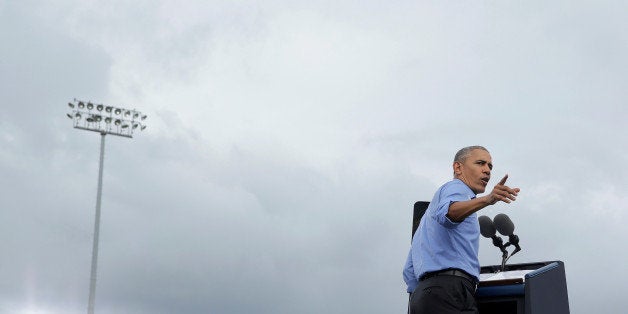
As the country prepares for the election this week, we should also be prepared for the day after the election. President Obama has indicated that he wants one last stab at pushing the Trans-Pacific Partnership (TPP) through Congress before leaving office. In preparation for this push he is already lining up the elite policy types (you know, the folks that couldn't see an $8 trillion housing bubble) in order to convince the public that we really, really need the TPP.
One part of the story that has been circulating widely is that trade is falling. This is supposed to presage an economic crisis, or at least slower growth. As the story goes, expanded trade supports growth. In the 1930s, trade fell and we got a worldwide depression, so we better not let that happen again.
The nature of the link between trade and growth is questionable, clearly causation goes both ways, but it is worth pointing out that the basic story is wrong. To pick a prominent example, a New York Times editorial last week told readers:
"The total value of American imports and exports fell by more than $200 billion last year; they've fallen by an additional $470 billion in the first nine months of this year. Sluggish growth is both a cause and a result of this slowdown."
While the dollar value of U.S. trade did fall in 2015 as the "New York Times" claims (it's not clear where the $470 billion for 2016 came from), the actual volume of trade increased both years. Using constant 2009 dollars, which control for price changes, trade increased by $2.3 billion from 2014 to 2015. It rose by $63 billion in the first nine months of 2016.
The 2015 growth figure is certainly slow, but it is not the decline widely being touted by those pushing for the TPP. The reason for the difference is that the price of oil and other commodities has plummeted. If we import oil at $50 a barrel we spend half as much on imported oil as when it sells for $100 a barrel. While there are serious environmental reasons not to be happy about low oil prices, it does not translate into the economic crisis that the proponents of the TPP are trying to paint.
The more general economic argument for the TPP actually is not very different from claiming we face an economic crisis because of falling oil prices. The TPP actually does little to reduce formal trade barriers like tariffs and quotas primarily because these are already very low in most cases. The U.S. already has trade deals with six of the eleven other countries in the pact.
The TPP is mostly about setting up a business-friendly structure of regulation, including a system of extra-judicial tribunals that exclusively benefit foreign investors. An important part of this regulatory structure is the strengthening of patents, copyrights, and related types of intellectual property claims. These forms of protectionism are equivalent to tariffs of several thousand percent, often raising the price of the protected items by a factor of a hundred or more.
To take one prominent example, the Hepatitis C drug Sovaldi has a list price in the United States of $84,000 for a three month course of treatment. A high quality generic version is available in India for $200.
This gap in prices matters hugely when we talk about the volume of trade flows. Suppose that one billion people in China use Microsoft's Windows operating system. If we make them all pay $50 for each system then this is $50 billion in U.S. exports to China. Now suppose that everyone in China is able to use Windows at no cost. In this case we have $50 billion less in exports, but we still have one billion people in China getting the benefit of the Windows operating system.
By making people pay more for ideas, the TPP will increase the volume of world trade. But, it is a huge stretch to argue that this is somehow good for economic growth or the people who will have to pay more for prescription drugs, software, and other protected items. (Yes, we need mechanisms for funding research, but there are more efficient routes.)
Anyhow, this is the nature of the arguments that we can expect to see in coming weeks if President Obama decides to push ahead on the TPP. If people need more convincing on the depths to which proponents of TPP will stoop to push the deal, consider this Washington Post editorial from 2007. The piece, which condemned the Democratic presidential candidates for criticizing NAFTA, told readers, "Mexico's gross domestic product, now more than $875 billion, has more than quadrupled since 1987."
If Mexico's GDP had in fact quadrupled since 1987 it would have indeed been impressive. It would have implied an annual growth rate of 7.0 percent over the prior twenty years, a pace almost no country except China has maintained. (The use of 1987 as a base year is peculiar, since NAFTA took effect in 1994.) Unfortunately it is not true, according to I.M.F. data, Mexico's GDP increased by just 86 percent over this period.
This Trumpian fabrication is the sort of game-playing we should expect from the proponents of TPP. There is a lot of money at stake in getting Congress to approve the deal and they have no intention of letting the truth get in the way.
